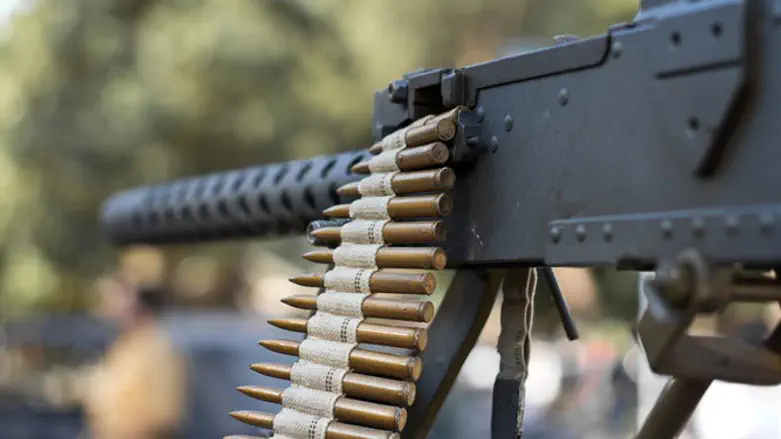
Mohsen Fakhrizadeh is dead. Media described him as the father of the Iranian nuclear program that started under his supervision in 1989 and according to Israeli intelligence continues to this very day.
In 2018 while addressing the General Assembly of the United Nations, Israeli Prime Minister Binyamin Netanyahu referred to Fakhrizadeh three times when he asked the representatives of the member states of the UN to “remember his name”.
The Israeli leader revealed that among the more than 100,000 documents and discs stolen by the Mossad during a nightly raid on Iran's secret nuclear archives in a Tehran suburb at the end of 2017 there was a note written by Fahrizadeh which explained his view on how to continue with the secret AMAD nuclear weapons program of Iran.
Netanyahu said, citing Fahkrizadeh’s note, that Iran’s "general aim is to announce the closure of Project AMAD" but that "special activities will be carried out under the title of scientific know-how development."
“This is how Dr. Mohsen Fakhrizadeh, head of Project AMAD, put it—remember that name, Fakhrizadeh," Netanyahu said, pointing to a slide showing Fakhrizadeh's comments.
"And in fact, this is exactly what Iran proceeded to do. It continued this work in a series of organizations over the years,” Netanyahu claimed.
Dr. Mohsen Fahkrizadeh was not only the head of Iran’s AMAD program, but later of the renamed Organization of Defensive Innovation and Research in the Islamic Republic, also known as SPND.
"You will not be surprised to hear that SPND is led by the same person who led Project AMAD: Dr. Fakhrizadeh," Netanyahu said during his address to the UNGA. He then added “not coincidentally, many of SPND's key personnel worked under Fakhrizadeh on Project AMAD. So this atomic archive (that the Mossad stole in Tehran) clearly shows the Iranian plan at the highest levels to continue work related to nuclear weapons under different guises and using the same personnel."
And Fakhrizadeh was not only the head of the SPND, but also functioned as Iran’s Deputy Defense Minister while he was a Brigadier-General in the Islamic Revolutionary Guards Corps.
He was not seen much in public and photos of him were seldom published.
The IRGC commander was also involved in Iran’s illicit ballistic missile program and refused to be questioned by the International Atomic Energy Agency (IAEA) time after time.
His assassination came at a sensitive and important time because of the coming change of power in the United States where President-elect Joe Biden and his running mate Kamala Harris have said that they intend to reopen negotiations with Iran about rejoining the JCPOA nuclear deal from 2015.
In 2018 the Trump Administration decided to leave the Joint Comprehensive Plan of Action and embarked on a campaign of maximal pressure against the Islamic Republic which caused great damage to the Iranian economy, but didn’t cause Iran to stop its illicit nuclear activities.
On the contrary, Iran stepped up the enrichment of uranium and the development of new types of enrichment centrifuges that can shorten the so-called break-out time to a nuclear bomb.
The IAEA just released a report that shows that Iran has now more than twelve times the amount of low-enriched uranium that it was allowed under the JCPOA.
As of November 2, 2020, Iran had a stockpile of about 3613.8 kilograms (kg) of LEU (hexafluoride mass), all enriched below 5 percent, or the equivalent of 2442.9 kg (uranium mass) the Institute for Science and International Security (ISIS) reported on November 12, 2020.
This means that the break-out time to a nuclear bomb has been shortened to 3,5 months only, according to ISIS, and Iran is now able to produce a second nuclear weapon.
There have been very conflicting reports on how exactly Fakhrizadeh was assassinated.
It was an “extremely puzzling assassination” wrote Potkin Azarmehr, a London-based investigative journalist, business intelligence analyst, and TV documentary maker who was born in Iran.
The official narrative released by the Iranian authorities is changing constantly and they were very quick to blame Israel for the assassination of Fakhrizadeh,
One of the main questions remaining, however, is how a team of 12 assassins managed to escape unharmed and disappear after an alleged extensive gunfight with the bodyguards of Fakhrizadeh.
The assault took place in broad daylight and there’s only one road leading up to Absard going in both directions. Absard is a mountain resort city 50 miles east of Tehran where the IRGC commander and other prominent Iranians have a vacation home.
Then there was a Fars News report, a state-controlled media outlet that claimed that Fakhrizadeh was assassinated by a machine-gun that was operated by remote control. The same report claimed that the gun was made in Israel, according to the Iranian outlet.
From my own experience with a Fars News reporter stationed in the Druze village of Magdal Shams on the Golan Heights I know; however, that their reporting is merely propaganda - even when it comes to events in Israel.
Potkin Azarmehr thinks that based on these conflicting official Iranian reports about the assassination, one could assume that the killing of Fakhrizadeh was an internal purge in order to create a narrative that Israel is trying to sabotage the stated intentions of the Biden Administration about renewing ties with the Islamic Republic.
By claiming that Israel was behind the assassination of the IRGC commander, Iran could justify further violations of the JCPOA, influencing public opinion against Israel and increase Arab opposition for new talks about the nuclear deal with the Islamic State.
Indeed, Iran on Wednesday decided already to ramp up uranium enrichment to levels close to weapon-grade fuel ( 20 percent) and threatened to bar IAEA inspectors from entering the country if American sanctions are not lifted soon. The measures were a clear signal to the new Biden Administration that Iran could also leave the JCPOA.